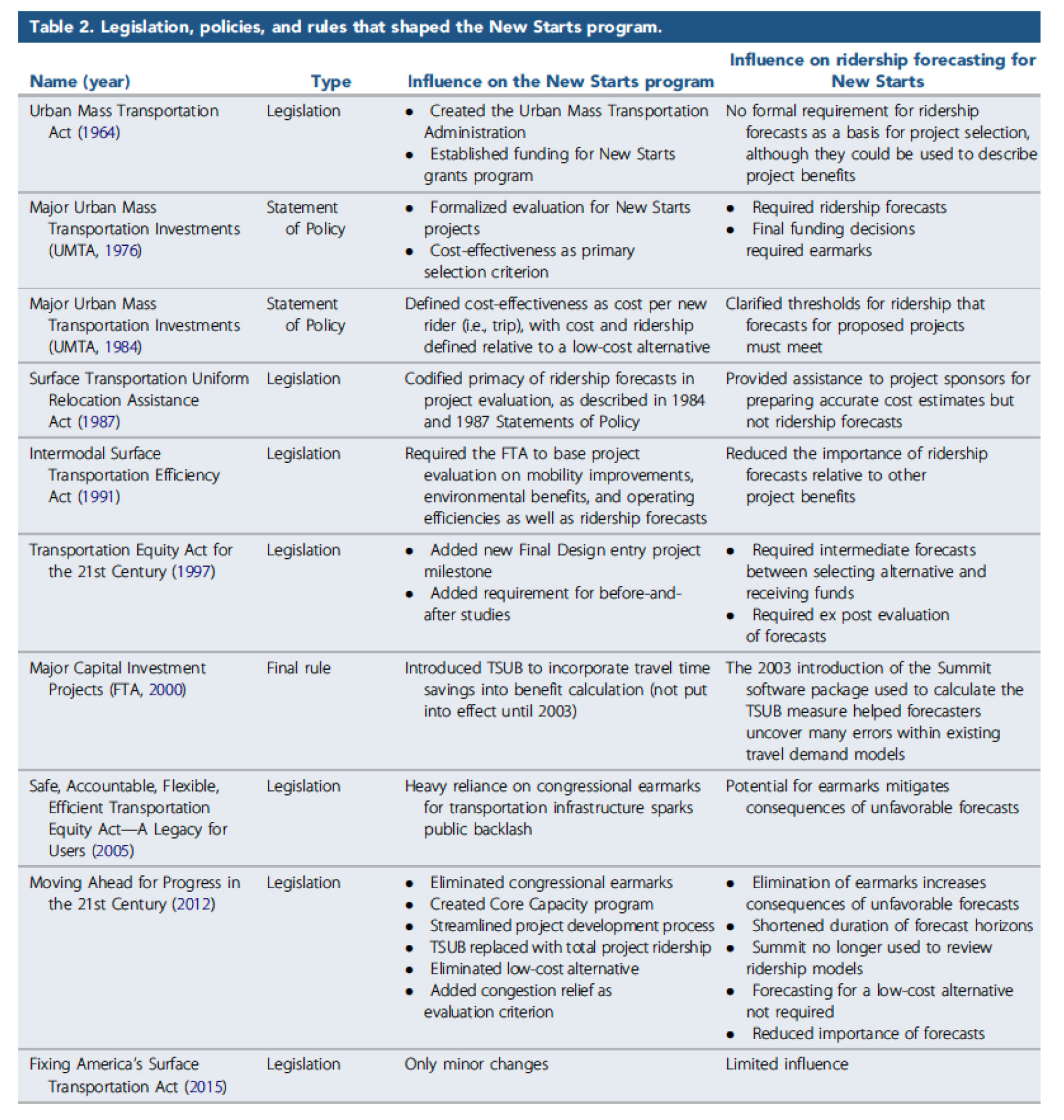Uncovering JAPA
Ridership Forecasts Should Do More Than Go With the Flow

Ridership forecasts are ostensibly objective documents. They foretell how demand will respond to changes in service, allowing transit agencies to make well-informed decisions in capital planning. Yet historically many forecasts overestimate ridership and few influence the decision-making process. In this situation, author Carole Turley Voulgaris asks "What Is a Forecast for?" in the Journal of the American Planning Association (Vol. 86, No. 4). Voulgaris explores the long-running federal New Starts Program, to suggest that as the contexts for forecasts have changed, so too should our understanding of their accuracy and value.
Forecast Accuracy in Transit Planning Evolution
Upon comparing early New Starts projects with those of the present, Voulgaris discovers a significant relationship between the inaccuracy of forecast and the year prepared. A 1989 study of six New Starts projects found an average 66 percent overestimation in ridership. Among six projects completed between 2015 and 2019, this overestimation dropped to 7 percent. Voulgaris argues that this reduction might be attributed to changes in the New Starts program itself.

Table 2: Legislation, policies, and rules that shaped the New Starts program.
Politics, Funding, and Transparency in Forecasting
Interviewing 13 transit professionals experienced with almost all projects in the New Starts program, Voulgaris identified three factors as the most consequential in forecast accuracy: internal influence, external influence, and model transparency. Interviewees describe that in its initial years (before 1980) the New Starts program used forecasts to rationalize limiting the role of the federal government in transportation. With forecasts having such high external influence on the funding of projects, individuals preparing forecasts had an incentive to overestimate ridership to best represent their projects. This manipulation likely led to little internal influence on the planning process.
As the program developed (1990-2003), the New Starts program suffered not from a lack of will to invest in projects but a lack of resources. Again, Voulgaris finds that individuals preparing forecasts were motivated to overestimate ridership for a competitive advantage. Despite their overestimation, interviewees pointed out that forecasts were gaining traction in local transit agencies' planning. Interviewees suggested this coincided with the New Starts program requiring applicants to use the Summit software package, an innovative forecasting tool introduced in the early 2000s. Since 2003, the importance of forecasts to local authorities has endured. Accountability also has become more important in forecast development with forecasters encouraged to make inputs of models accessible to the general public.
This article demonstrates that politics imbues within even the seemingly most objective documents in the planning process. The purposeful inaccuracy of forecasts is an ethical concern. It however also is a direct consequence of the lack of funding available to transportation agencies to fulfill their mandate to provide a myriad of mobility options and increase economic development. For forecasts to be useful, forecasters and local transit agencies must have confidence that funding will be available for projects that can create meaningful change in their spaces.
Top Image: Portland, Oregon light rail heading onto the Steel Bridge for downtown. Photo by Poe/iStock/gettyimages.com.


